Best Cordless 6-1/2 Circular Saw
6-1/2″ Circular Saw Head to Head | 2022
Commonly referred to as a “Trim Saw” the 6-1/2″ cordless circular saw is useful for more than just cutting trim. Most 6-1/2″ saws have a blade-left design which many trim carpenters feel offers a better line of sight, ensuring accurate cutting. They’re the same tool as their 7-1/4-inch big sister, just in a smaller, more lightweight package.
The Tool Box Buzz Crew recently examined eight 6-1/2″ cordless circular saws from seven major brands and devised a series of well-planned tests (along with some sweet custom jigs) to determine which was the best cordless 6-1/2″ circular saw.
This article will provide you with a thorough overview of the performance of the industry’s top 6-1/2″ cordless circular saws! We used 6-1/2′′ blade diameters, 18V to 36V equipment, and single battery packs in our tests. We’ll recognize best-in-class winners, reveal endurance testing results, and name the crew’s coveted best overall winner!
6-1/2″ Cordless Circular Saw Testing Format
Our crew tested a total of eight saws in seven key categories in this test. Our 6-1/2″ Cordless Circular Saw Head-2-Head format, was similar to our 7-1/4″ Circular Saw Head-2-Head. Each of the criteria was ranked separately, and the combined test results were utilized to determine the overall Best 6-1/2″ Cordless Circular Saw.
- Accuracy / Line of Sight– The saws’ precision and line of sight were compared, as well as their ability to follow a cut line.
- Performance [Power / Speed Test]-We looked at cutting speed through 3/4″ plywood as an indicator of saw motor performance.
- Features– An overall comparison of features and specifications.
- Weight – bare tool weight only
- Noise – We measured the tool under no load and at identical cutting load conditions with a decibel meter.
- Price– When it comes to deciding which saw is best for a user, price is always a consideration. At the time of writing, we’ve given the current retail cost for each of the saws “as-tested.” We didn’t consider pricing in our total score because we examined a variety of saw grades.
- Best Value –This category winner often strikes a chord with most people because it not only performs well in testing but also feels good on the wallet.
Cordless 6-1/2″ Circular Saw Specifications
Here is the list of specifications for all the Cordless 6-1/2″ Circular Saws the Tool Box Buzz Pro team tested in this Head-2-Head:
Bosch – Model: CCS180B
- Volts: 18V
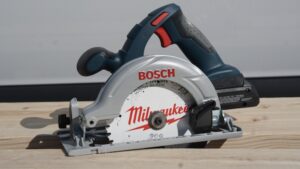
- Load Speed: 3,900 RPMS
- Max Cut Depth at 90°: 2″
- Max Cut Depth at 45°: 19/16″
- Bevel Capacity: 50°
- Weight: 6.7 LBS
- Bare Tool Price: $114.80
- Mfg Link: Bosch CCS180B
DEWALT – Model: DCS565B
- Volts: 20V
- No Load Speed: 4,950 RPMS
- Max Cut Depth at 90°: 2-1/8″
- Max Cut Depth at 45°: 1-5/8″
- Bevel Capacity: 50°
- Weight: 8.0 LBS
- Bare Tool Price: $149.00
- Mfg Link: Dewalt DCS565B
Makita – Model: XSH03Z
- Volts: 18V
- No Load Speed: 5,000 RPMS
- Max Cut Depth at 90°: 2-1/4″
- Max Cut Depth at 45°: 1-5/8″
- Bevel Capacity: 50°
- Weight: 6.7 LBS
- Bare Tool Price: $179.00
- Mfg Link: Makita XSH03Z
Metabo – Model: KS 18 LTX 57
- Volts: 18V
- No Load Speed: 4,600 RPMS
- Max Cut Depth at 90°: 2-1/4″
- Max Cut Depth at 45°: 1-11/16″
- Bevel Capacity: 50°
- Weight: 6.2 LBS
- Bare Tool Price: $199.99
- Mfg Link: Metabo KS 18 LTX 57
Metabo – Model: KS 18 LTX 66
- Volts: 18V
- No Load Speed: 4,800 RPMS
- Max Cut Depth at 90°: 2-19/32″
- Max Cut Depth at 45°: 1-11/16″
- Bevel Capacity: 46°
- Weight: 7.7 LBS
- Bare Tool Price: $349.99
- Mfg Link: Metabo KS 18 LTX 66
Metabo HPT – Model: C18DBALQ4
- Volts: 36V
- No Load Speed: 4,100 RPMS
- Max Cut Depth at 90°: 2-19/32″
- Max Cut Depth at 45°: 1-13/16″
- Bevel Capacity: 50°
- Weight: 6.08 LBS
- Bare Tool Price: $139.00
- Mfg Link: Metabo HPT C18DBALQ4
Milwaukee – Model: 2730-20
- Volts: 18V
- No Load Speed: 5,000 RPMS
- Max Cut Depth at 90°: 2-1/8″
- Max Cut Depth at 45°: 1-5/8″”
- Bevel Capacity: 50°
- Weight: 6.8 LBS
- Bare Tool Price: $217.00
- Mfg Link: Milwaukee 2730-20
Ridgid – Model: R8656B
- Volts: 18V
- No Load Speed: 5,000 RPMS
- Max Cut Depth at 90°: 2-1/4″
- Max Cut Depth at 45°: 1-5/8″
- Bevel Capacity: 50°
- Weight: 5.4 LBS
- Bare Tool Price: $149.00
- Mfg Link: Ridgid R8565B
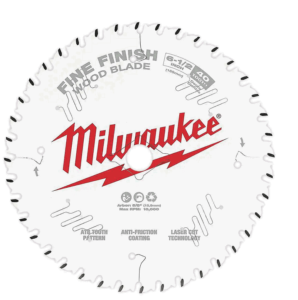
Milwaukee Saw Blades – Model 48-40-0622
All circular saws were equipped with task-specific, brand new Milwaukee 6-1/2″ 40 tooth Fine Finish blades, model 48-40-0622, prior to testing. This shifted the focus away from the blades and more towards the tools. By removing an external testing variable, the use of uniform blades throughout the testing helped to maintain uniformity. Milwaukee blades are popular among the crew because they cut extremely well, are priced just right, and are reliable.
Milwaukee circular saw blades provide long life, improved precision, and cooler cuts in wood cutting applications. These blades are made with application-specific Cobalt Infused Tungsten Carbide blades to improve cutting life and keep tip sharpness.
Their blades contain Laser Cut Vibration Slots to reduce wobbling and warping. An Anti-Friction Coating protects the blades against corrosion and gumming.
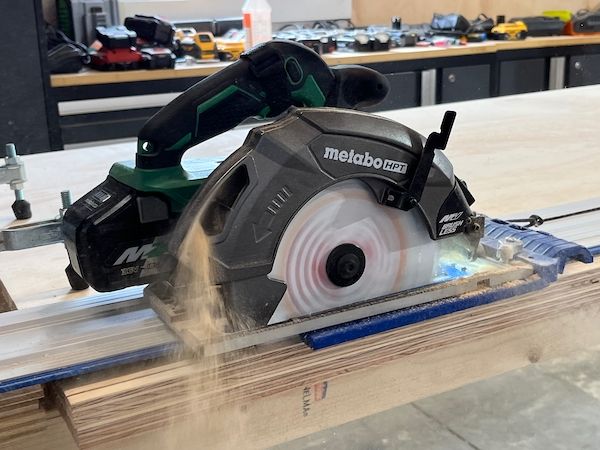
Accuracy Testing / Line of Sight Winner – Makita
These smaller saws were once commonly referred to as trim saws. So we were looking for good accuracy out of the box on these tools. For our accuracy test, we asked one experienced user to use every saw to cut plywood with a straight edge guide, and to rank the tools based on their performance. The saws were also checked at their 90-degree and 45-degree bevel settings for accuracy.
We purposefully had a single operator execute this test as multiple users might have slightly different techniques, and therefore results, as compared to a single operator. We also tested the accuracy of the scales and kerf slots in the baseplate of the saw. If they are sufficiently accurate these scales and notches can be used to line up framing cuts without need of marking lines before making cuts and can be a tremendous time saver!
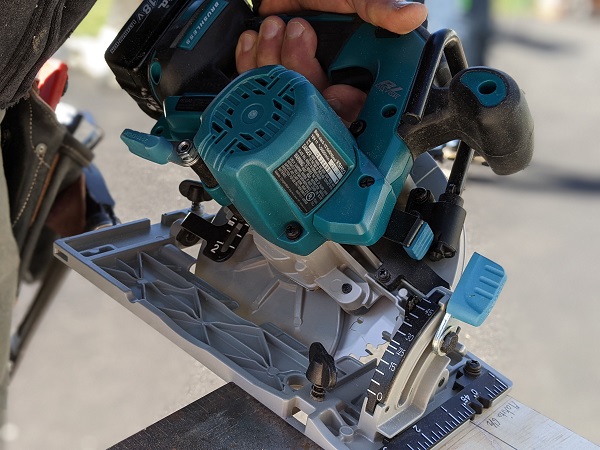
| Mfgr | Model | Accuracy | Rank |
| Makita | XSH03T | 1 | 1 |
| Metabo | KS 18 LTX 57 | 2 | 2 |
| Metabo | KS 18 LTX 66 | 2 | 2 |
| Milwaukee | 2730 | 2 | 2 |
| Bosch | CCS180-B14A | 3 | 5 |
| Metabo HPT | C18DBALQ4 | 4 | 6 |
| Rigid | R8656B | 4 | 6 |
| DEWALT | DCS565P1 | 5 | 8 |
For the accuracy category each of the circular saws was ranked on accuracy in the following areas:
- Scale/slot accuracy
- Bevel accuracy when set to 45 degrees.
- Cross-cut accuracy when set to 90 degrees (how perpendicular the cut is to the surface)
- Line of Sight
Accuracy Testing – Makita XSH03T
The Makita had spot-on bevel and square cuts as well as good sightlines and very accurate baseplate kerfs that allowed precise placement of a cut without even needing to see the blade. The scale at the front of the saw was also adjustable! Allowing correction to any issues that may come up in the future with that accuracy.
Both Metabo Saws and Milwaukee tied for 2nd place.
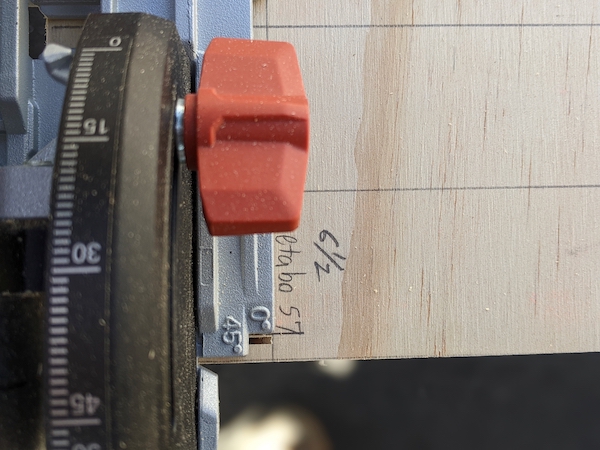
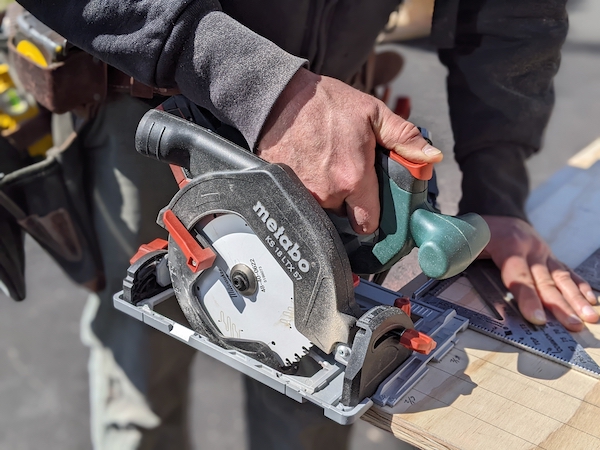
The Metabo LTX 57 cut perfect bevel and square cuts. The Metabo LTX 66 saw had an accurate kerf guide and made good square cuts. The bevel cuts were slightly off but the stop is adjustable so this can be corrected.
The Milwaukee has accurate kerf guides and had accurate square and bevel cuts. The Milwaukee would have tied for first but there is no 45-degree stop on the bevel adjustment, so getting a good 45-degree bevel cut requires some extra attention from the user.
The Milwaukee was powerful and smooth cutting, line of sight is out standing but searching for a 45degree bevel is a pain ~ SCOTT
The Bosch came in third and had kerf notches that were slightly offset from the actual cut. It also lacked a 45-degree stop on the bevel setting. These two factors bumped it down to the third-place spot.
Site Line / Base Plate
No matter how well a tool feels in your hand or how long the run-time is, if you can’t see what you’re doing, you can’t expect great results. At a minimum, you’ll probably be pulling your hair out when getting ready to make a money cut.
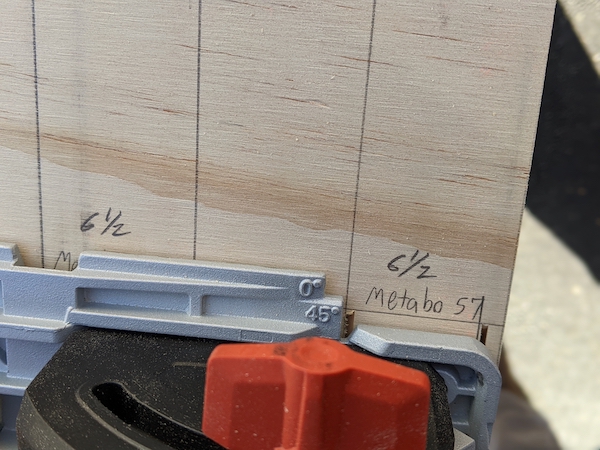
Best Line of Sight
Nothing will kill your productivity and confidence like swapping from sight-line to blade, or vice-versa, to see if you can actually have your blade on the cut line. At worst you’ll have to deal with subpar cuts that you can’t redo, which for a lot of us, is tough to live with. So in this assessment, we focus on how well users can see the blade during operation from both the blade and motor side.
The order below is how the saws ranked with the line of sight. Bosch had the best line of sight followed by DEWALT and Milwaukee.
- Bosch
- DEWALT
- Milwaukee
- Ridgid
- Makita
- Metabo 66
- Metabo HPT
- Metabo 57
Performance Testing (Power/Speed)
The blade, its width, rotational speed, number/shape of teeth, the motor’s torque, and horizontal force applied all influence how quickly a circular saw can cut through a given material.
The saw motor will encounter resistance as the blade passes through the material, requiring more torque and power to keep the blade spinning at its optimal speed.
The saw blade rotational speed will slow as a blade edge dulls or too much horizontal force is exerted. When a saw is working too hard, a seasoned operator can typically tell and knows when to reduce the amount of force applied during a cut. A more powerful saw will be able to counteract these resistances better and ultimately be able to remove more material and cut faster.
The TBB crew needed to minimize as many cutting variables as possible to test the power and, ultimately, the speed of these saws. We did this by using the same type of blade on all of the saws, using consistent 3/4″ AC grade plywood as our cutting material, and eliminating the human horizontal pushing component by using a drop weight pulley system and a low friction rig.

For cutting and tracking consistency, each saw was mounted on a Kreg Accu-cut sled. An 8-foot section of 3/4″ plywood was indexed underneath the Accu-cut track system, producing an 8-foot rip of 3/4″ plywood. An 8-pound weight was attached to a line that was hooked to the Accu-cut sled and fed through a series of low friction pullies.
Three cuts through the material were delivered to each saw, and the time of all three cuts was averaged and compared. Micro-switches controlled the start and stop times of each cut, eliminating human error while using a portable stopwatch.
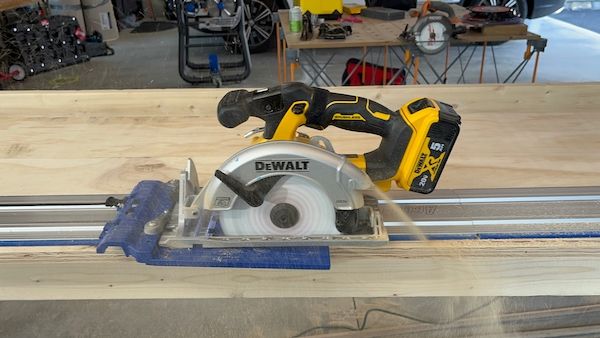
The track system was cleaned of all sawdust and debris after each cut, and lubricated with silicone spray before its first run to ensure a smooth, low-friction cut.
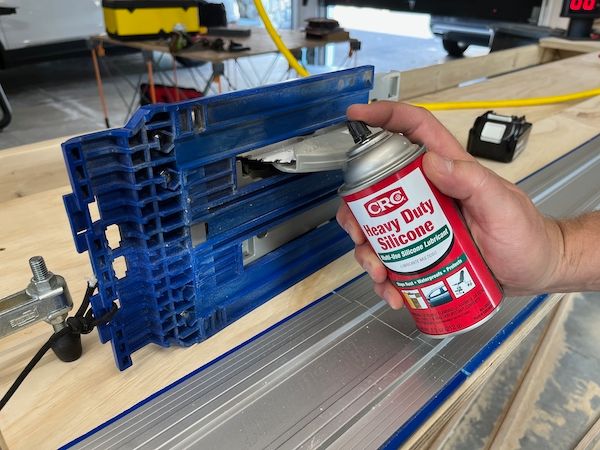
The result of this test was that the more powerful saws were able to maintain the blade’s rotational speed, cutting through the plywood faster. The test allowed us to stress the saws in a non-abusive manner, allowing us to rate them individually and identify which saw was the most powerful.
Performance Testing (Power/Speed) – Winner RIDGID
One of the most common, if not THE most common materials on a construction site is plywood. So for our Power/Speed test, we used our Accu-cut jig to test each tool’s cutting speed through 3/4″ plywood. Three runs were performed for each tool and their times were averaged.
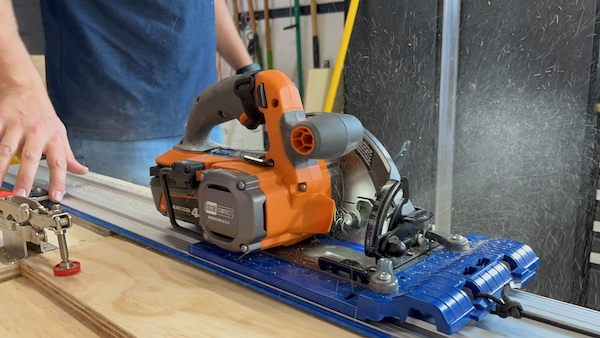
The fastest saw was the RIDGID cutting a little over a foot a second, with an average cutting speed of 9.6 seconds. This saw cut effortlessly and it was clear that the recent improvements to the saw increased its cutting power.
A close second place went to the Metabo 57 saw with an average cut time of 9.8 seconds, and the Metabo 66 saw came in third place with an average 10-second cut. The team was impressed with both Metabo saws, more on that later.
| Mfgr | Model | Run1 | Run2 | Run3 | Run Ave | Rank |
| Rigid | R8656B | 9.75 | 9.42 | 9.6 | 9.6 | 1 |
| Metabo | KS 18 LTX 57 | 9.93 | 10 | 9.5 | 9.8 | 2 |
| Metabo | KS 18 LTX 66 | 8.5 | 10.75 | 10.7 | 10.0 | 3 |
| Metabo HPT | C18DBALQ4 | 11.8 | 11.9 | 11.2 | 11.6 | 4 |
| Makita | XSH03T | 12.31 | 12.49 | 12.3 | 12.4 | 5 |
| Dewalt | DCS565P1 | 14.2 | 13.69 | 14 | 14.0 | 6 |
| Bosch | CCS180-B14A | 16.58 | 15.84 | 15 | 15.8 | 7 |
| Milwaukee | 2730 | 16.28 | 17.71 | 17 | 17.0 | 8 |
I love the weight and compact size of the Metabo HPT – decent power too! ~ Scott
Best Cordless 6-1/2-inch Circular Saw Features – Winner Metabo 57
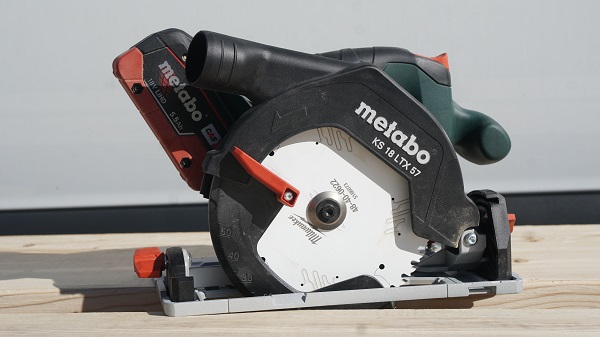
Comparing tool features from different brands is never easy, but the truth is in the particulars, thus a feature comparison is required. On a scale of one to five, the complete team used all of the tools in a range of cutting configurations and tests to rate six different features on these saws. [On a scale of 1 to 5, 1 being the best]
Saw Features considered
- Blade Change | Spindle Lock
- Bevel
- Blade Depth
- Trigger | Grip
- Electric Brake
- Site line / Scale
| Mfgr | Model | Blade Chg | Bevel Adj | Depth Adj | Trigger | Totals | Rank |
| Metabo | KS 18 LTX 57 | 2 | 1 | 3 | 2 | 8 | 1 |
| Metabo | KS 18 LTX 66 | 1 | 2 | 3 | 2 | 8 | 1 |
| Makita | XSH03T | 5 | 3 | 1 | 1 | 10 | 2 |
| Dewalt | DCS565P1 | 4 | 4 | 2 | 3 | 13 | 3 |
| Metabo HPT | C18DBALQ4 | 2 | 5 | 5 | 1 | 13 | 3 |
| Milwaukee | 2730 | 3 | 3 | 2 | 5 | 13 | 3 |
| Bosch | CCS180-B14A | 5 | 3 | 2 | 4 | 14 | 4 |
| Rigid | R8656B | 3 | 3 | 5 | 3 | 14 | 4 |
Blade Change Winner – Metabo 66
Quality cuts depend on the accuracy and the proper blade for your application. Changing a saw blade should be simple, safe, and easy. We swapped out the blades on nine saws, and while there were no clear standouts, a few major distinctions emerged during our tests, allowing us to determine the best-in-class winners.
The blade change evaluation yielded nothing noteworthy. The wrench’s onboard storage and how fast and easily the arbor locked for blade changes were the significant differentiators. There were a few things worthy of nothing during the blade change evaluation.
The Metabo LTX 66 was the easiest saw to change the blade. Part of that reason was that it does not have a base plate on the blade side due to the fact that the saw is track compatible. Additionally, it has a guard retraction lever, located near the arbor lock that can both be actuated with one hand, to assist in blade change. The crew felt this was a great design feature!
The Bosch was difficult to change the blade due to very tight tolerances between the blade and the retractable guard. The blade actually scraped while inserting. The Makita does not have an onboard wrench for blade changing which can have you looking for a hex key when needing to change the blade.
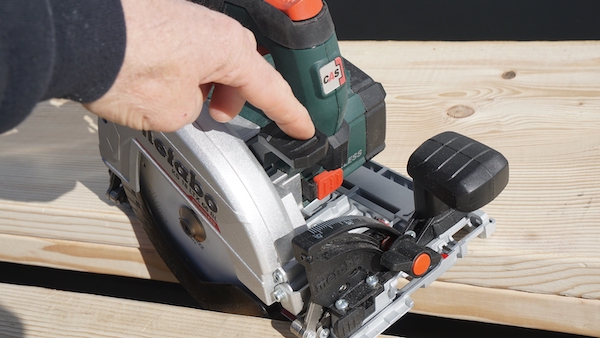
The Metabo saws both had the most locking detents [12 detents] compared to the DEWALT which only had two. All other saws fell in the 4-12 range.
Bevel Winner – Metabo 57
If our crew is setting a circular saw bevel to 22.5, 45, or more degrees as a remodeling carpenter, the scale is probably good enough. Typically if we are making a cut that required a “dead on” bevel, you would see us reaching for the miter saw, table saw, or a track saw. That said, we’d preferably like to use a saw with a precise bevel scale that isn’t a struggle to set. A circular saw is a rough-cutting saw that prioritizes speed. The major performance indicator for this category is a bevel scale that allows users to quickly select and check common bevel values.
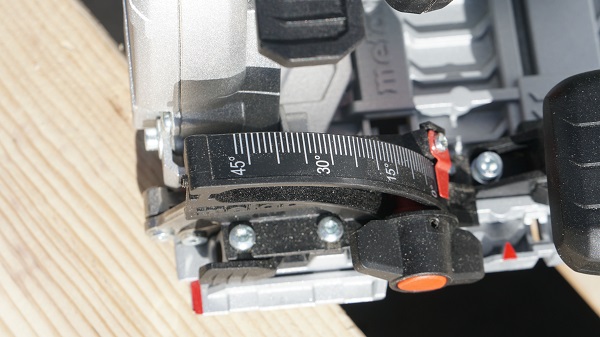
Six out of the eight saws bevel to 50° with the exception of the Metabo 66 saw which bevels to 46° and the Metabo HPT which bevels to 45°.
All of the saws with the exception of the Bosch, Milwaukee, and Metabo use a lever-style lock. The Bosch bevel lock lever has a plastic wing nut with a coarse thread, and a lot of play that the team felt could easily come loose and be lost. The Milwaukee and Metabo saws had noticeably much better design bevel levers.
WOW – the Metabo 66 is my FAV saw so far, its truly in its own category, the blade retraction lever is sweet, rotating and locking dust chute and track compatible ~ Ethan
The DEWALT had the stiffest bevel adjustment during our test. We understand that this may take some time to “loosen up.” The Metabo LTX 57 has a ball detent at 45-degrees, will max out at 50-degrees, and has dual bevel locks. The Crew favored Milwaukee because of its easy-to-read scale and had nice detent action.
Blade Depth Adjustment – Winner Makita
Our crew decided that adjusting the depth was best left to a quick check on the workpiece to see where the blade extends beyond the material to be cut. Still, there’s much to be said about a gauge that can set the depth of the saw fast and accurately. The scale was straightforward to see in this area, but the tools frequently failed to appropriately show where on the scale the saw was set. This made determining the best in class in both categories a breeze.
In the specifications section above, you can find what each saw cutting depth is at 90° as well as 45°. All of the saws except Ridgid, Metabo HPT, and Metabo 66, have a depth adjustment lever on the motor side of the saw. Of those three the Metabo 66 has a larger, easier accessed lever. The Metabo HPT and Ridgid have an in-line [straight] lever, located between saw guard and handle, that the team did not like.
The Metabo KTX 57 has a super smooth bevel action, with a cam-lock style lever that works really well. DEWALT, Bosch, and Milwaukee all have outboard levers, and decent action but the scales could be better. The Makita saw has a silicone lever, a high contrast scale, with large numbering, and is easy to read. We also thought the action is decent.
Trigger | Grip – Winner – Tie with Makita and Metabo HPT
There must be enough friction between the user’s hand and the handle for a circular saw to have a decent grip. When the user’s hand is sweaty, this is even more critical. The grips on all of the saws were non-slip, non-conductive, and compressible.
We considered frequent motions of the index finger when running the circular saw when looking at tool triggers. This movement, we can all agree, should be pleasant. In contrast to pinch points between the trigger and housing, which can be painful or generate hot spots, a longer trigger allows two or three fingers to engage and may lessen discomfort.
This DEWALT saw doesn’t have a trigger pinch point like its bigger sister! Scott
We unanimously liked Metabo LTX 57 with its rubber over-mold on the trigger, making it the nicest trigger. The Makita and Metabo HPT had the best grip trigger combo.
They both have excellent oversold, a well-shaped, comfortable grip, and rounded trigger edges. The Milwaukee snap-action trigger was not a favorite among some of the team, but regular users commented that they don’t notice it.
Stand Out Features
There were a few aspects that stood out as having an impact on performance and safety. It was noted that the DEWALT, Makita Milwaukee, and the Ridgid all have rafter hooks. The Metabo KS 18 LTX 66 was the only track-compatible saw giving it the only standout feature to note in this category.
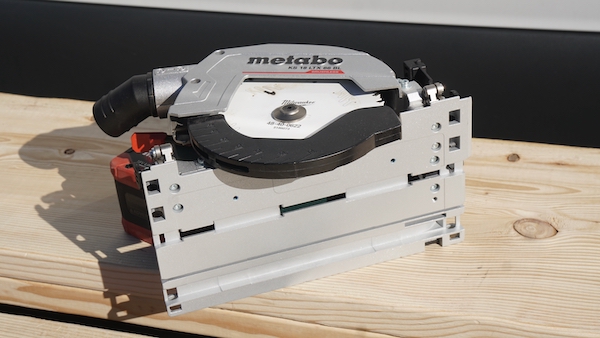 The Metabo HPT saw is a multi-volt saw that has a corded adapter allowing you to plug in and cut all day. This saw also takes the cutting depth winner cutting 2-19/32″ at 90°.
The Metabo HPT saw is a multi-volt saw that has a corded adapter allowing you to plug in and cut all day. This saw also takes the cutting depth winner cutting 2-19/32″ at 90°.
| Mfgr | Model | Weight (lb) | Rank |
| Rigid | R8656B | 5.9 | 1 |
| Metabo HPT | C18DBALQ4 | 6.0 | 2 |
| Makita | XSH03T | 6.2 | 3 |
| Metabo | KS 18 LTX 57 | 6.3 | 4 |
| Dewalt | DCS565P1 | 6.5 | 5 |
| Milwaukee | 2730 | 6.8 | 6 |
| Bosch | CCS180-B14A | 7.0 | 7 |
| Metabo | KS 18 LTX 66 | 7.8 | 8 |
Weight – Winner RIDGID
Weight and balance are two words you head tradespeople speak about when first picking up a tool and trying it out. The lightest tool of the group was the RIDGID at 5.9 lbs, followed by the Metabo HPT at 6lbs and the Makita at 6.2 lbs.
The Makita saw cuts fast, it’s light and comfortable in the hand, and the adjustments are easy! ~ Jeremy
Noise – Winner Milwaukee
OSHA allows 8 hours of exposure for noise levels up to 90 decibels, but the exposure limits drop rapidly at 95 decibels and higher. Hearing protection should be worn at all times when using circular saws because they are extremely loud.
| Mfgr | Model | Noise | Rank |
| Milwaukee | 2730 | 95.0 | 1 |
| Metabo HPT | C18DBALQ4 | 95.5 | 2 |
| Makita | XSH03T | 97.3 | 3 |
| Metabo | KS 18 LTX 57 | 97.8 | 4 |
| Metabo | KS 18 LTX 66 | 99.7 | 5 |
| Bosch | CCS180-B14A | 100.3 | 6 |
| Dewalt | DCS565P1 | 100.5 | 7 |
| Rigid | R8656B | 103.6 | 8 |
We used a noise meter to measure the saw’s dB level in a no-load situation at a set distance nearly the same as a user’s ear spacing to test these saws consistently. The crucial point is that the saws were compared against each other in a consistent manner, despite the fact that decibel measurements are relative to any setting. We evaluated these saws in a no-load capacity; nevertheless, when the saws are loaded, the noise level increases and the cutting material dictates the noise level.
The quietest saw was Milwaukee at 95.0 dB with the Metabo HPT close behind is art at 95.5 dB. All of these saws require hearing protection.
Man, this Milwaukee is smooth and quiet. I like the line of sight and solid rafter hook. Wishing that the bevel scale has positive detents. ~ Jeff D
Price –Winner Bosch
The price of a tool can sometimes be the deciding factor in whether or not to buy it. We can all agree that price is an important factor to consider when buying tools, especially for those of you who are just getting started in the trades. We also understand that most contractors are brand loyalists who will prefer to stick with their current battery platform rather than branch out and build a new line of cordless tools.
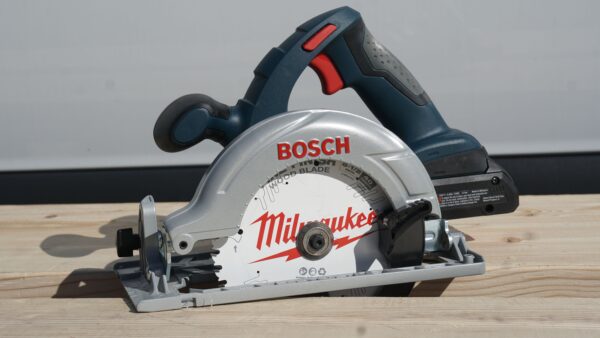
The bulk of these saws may be found at your local big box stores, and almost all of them can be found online at ACME Tools. We’ve included the bare tool pricing (at the time of publishing this article).
The Bosch handle angle is perfect if ripping sheet stock – it is angled in-line with your arm, not upwards, liker the other saws. ~ Jeremy
| Mfgr | Model | Bare Tool Price | Rank |
| Bosch | CCS180-B14A | $119 | 1 |
| Metabo HPT | C18DBALQ4 | $124 | 2 |
| Rigid | R8656B | $149 | 3 |
| Dewalt | DCS565P1 | $151 | 4 |
| Makita | XSH03T | $179 | 5 |
| Metabo | KS 18 LTX 57 | $200 | 6 |
| Milwaukee | 2730 | $217 | 7 |
| Metabo | KS 18 LTX 66 | $350 | 8 |
The lowest-priced saw was the Bosch, model CCS180B, costing $114.80. Coming in second was the Metabo HPT at $139.00, and third place was a tie going to DEWALT and Ridgid at $149.00.
The Metabo KS 18 LTX 66 was the most expensive saw at the time of writing this article. The price of this saw is $349.00. It can be found on the ACME Tools. This saw has outstanding design features; such as a track-compatible base plate and excellent ergonomics, and really nice blade guard lever, which contributes to its high cost.
Overall Best in Class 6-1/2″ Cordless Circular Saw –Metabo KS 18LTX 57
When naming the overall best in class saw we consider all categories assessed with endurance, design, and value leading our decision. Ultimately we select a tool that performs exceptionally well in its primary function, delivers high-quality features that enhanced performance, and does so at a fair price.
The intangibles often contribute to a tie-breaker in any given category, but because the overall best in class is a combination of so many individual assessments our selections are usually very objective given the results of the head-to-head.
| Mfgr | Model | Performance | Weight | Accuracy | Features | Totals | Rank |
| Metabo | KS 18 LTX 57 | 2 | 4 | 2 | 1 | 9 | 1 |
| Rigid | R8656B | 1 | 1 | 4 | 4 | 10 | 2 |
| Makita | XSH03T | 5 | 3 | 1 | 2 | 11 | 3 |
| Metabo HPT | C18DBALQ4 | 4 | 2 | 4 | 3 | 13 | 4 |
| Metabo | KS 18 LTX 66 | 3 | 8 | 2 | 1 | 14 | 5 |
| Dewalt | DCS565P1 | 6 | 5 | 5 | 3 | 19 | 6 |
| Milwaukee | 2730 | 8 | 6 | 2 | 3 | 19 | 6 |
| Bosch | CCS180-B14A | 7 | 7 | 3 | 4 | 21 | 7 |
The Metabo KS 18LTX 57 performed consistently in all the categories that mattered. It scored a perfect score in features, and came in second in performance and accuracy, weight was the only category that hurt the Metabo. The Metabo took first place with 9-points.
The RIDGID came in a close second with 10-points. RIGID took the top spot in performance and weight. It slipped in accuracy and features but came in for a solid number two placement. It delivered a powerful cutting performance in a lightweight and compact package.
Third place went to the Makita saw. Makita is always a solid competitor and this saw is no different. Makita to the top spot in our accuracy assessment, second in features, and third in weight. It suffered in performance and was underpowered when compared to the other saws.
My thoughts on the Makita: Smooth, good power, excellent adjustments, well engineered, and the user experience is just plain excellent! ~ ROB
Best Value Saw – Winner RIDGID
This category winner often resonates more with people because it highlights the saw that performed well, and costs less. In some ways it’s a more important category than the top spot, crowned king of 6.,5″ saws.
This is typically the saw that performs well in our testing and is priced right. In this case, RIDGID crushed the testing and still is priced right at $149.00.
The RIDGID has a great ratio of power to size & weight. With a brushless motor delivering 5000 RPMs, this unit has the speed and torque needed for making fast & accurate cuts. The compact design and magnesium guard make this the lightest weight 6-1/2” Pro circular saw in the industry.
If this saw doesn’t win the BEST saw, then it better wins the “Best Value.” The weight to power ratio rocks, it has a great line of sight – it’s just a nice saw! ~ ROB
Conclusion
We attempt to offer you the most thorough information possible in each of our Head-2-Head testings. Our team of Pro contractors put a significant amount of time and attention into our Best 6-1/2′′ Circular Saw Head-to-Head analysis in order to provide you with the most thorough data available.
These tests and evaluations are complex and time-consuming, and because we are not a professional tool testing laboratory, we are limited with time on the tools and scope of testing. Our team simply does not have the resources to test these saws for extended periods of time in order to assess their durability, and we cannot potentially examine every application for which they could be used.
You have complete control over what information you want or don’t want! If you don’t like a category we scored, simply remove it from the matrix and reorder them. We also recognize that many tradespeople have invested a large amount of money in a battery platform and that sticking with that brand is a major factor. Our goal was to arm you with the knowledge you’d need to make your own decisions and boy did we have a blast doing it!
Thank you for following along with this Head-2-Head article and if you have a moment, please check out our other Head-to-Head Tests.
Buy Now From Our Sponsored Retailers
Other Options
Best 6-1/2″ Cordless Circular Saw | Video Review
About the author
6 Comments
Leave a comment
Disclosure
Product reviews on this site contain our opinion of a product or service. We will always strive for objectivity and transparency in our reviews. Our goal is to provide readers with honest, objective information based on our own experiences. We never have and never will accept payment in exchange for a positive review. Many of the products that we review are provided to us for free by a manufacturer or retailer. In some cases, we also have advertising or affiliate relationships with manufacturers and retailers of products and services we review. For additional information please visit our additional disclosure policies.











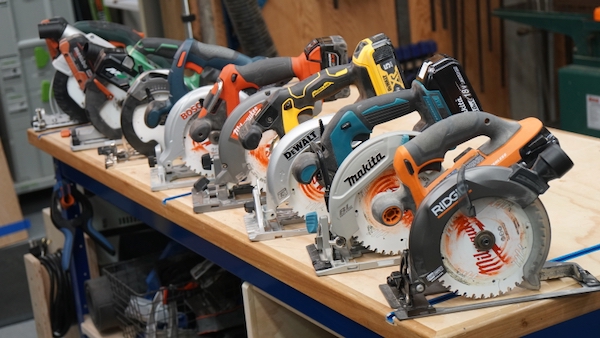
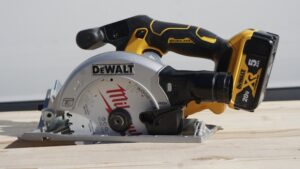
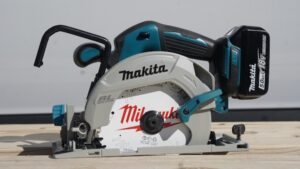
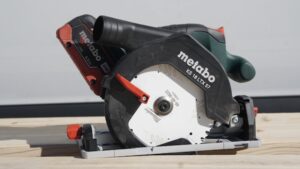
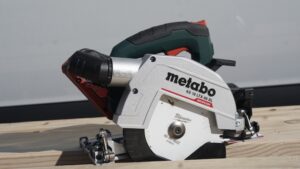
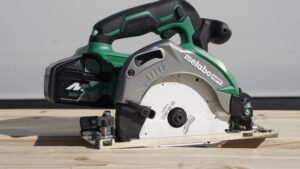
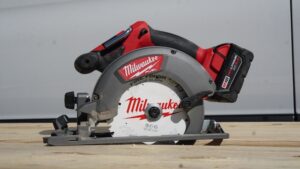
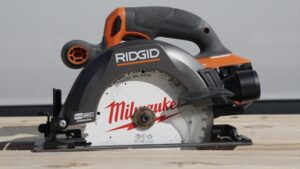
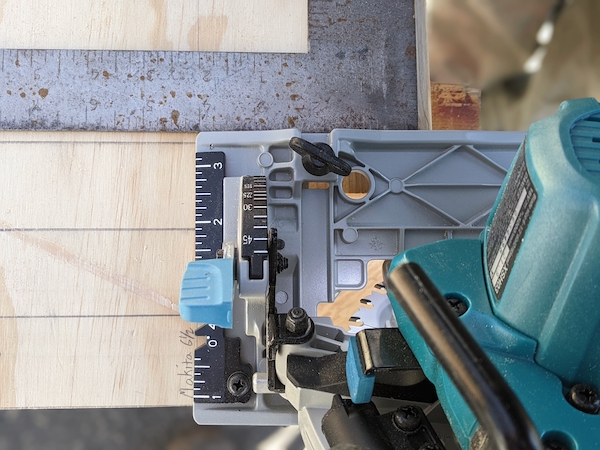
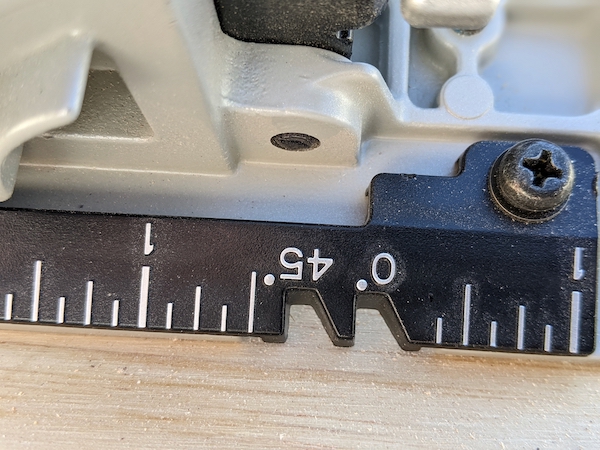
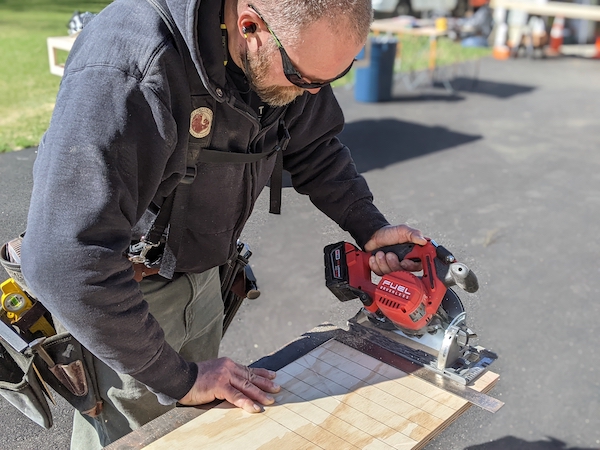
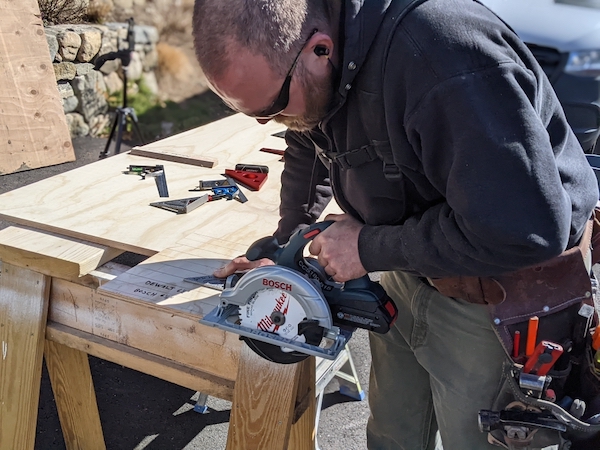
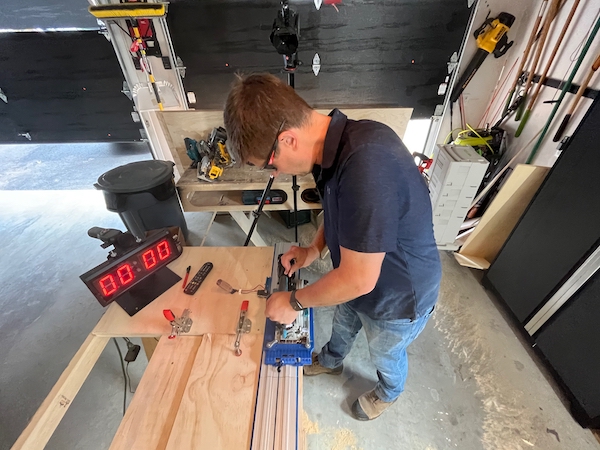
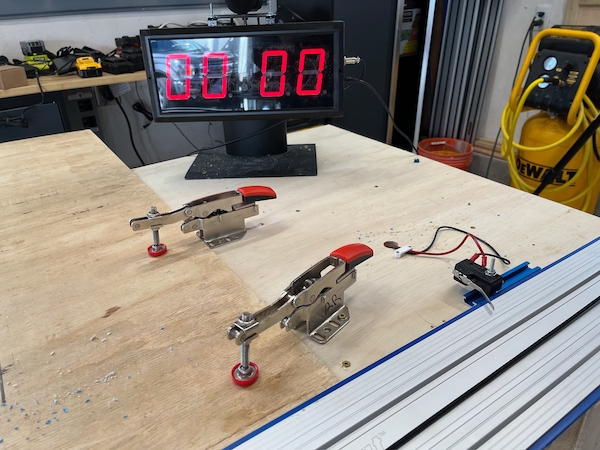
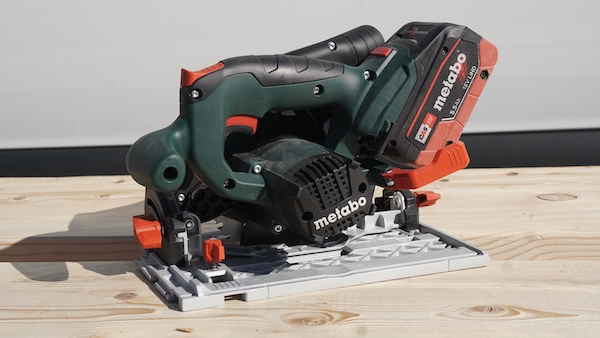
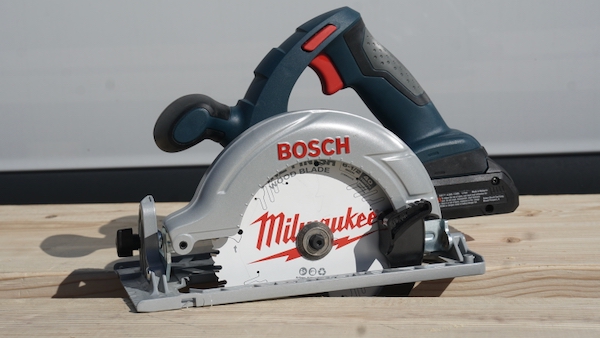
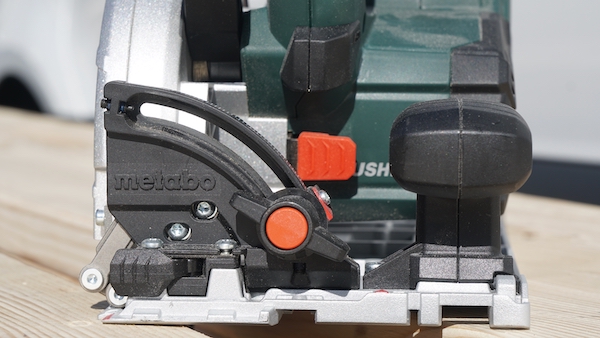
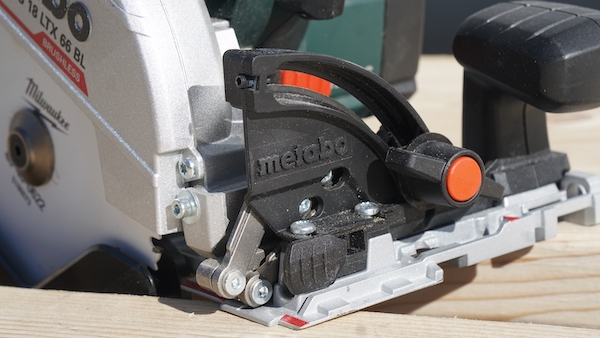
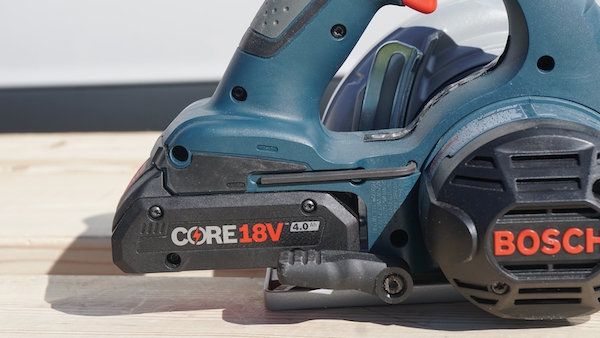
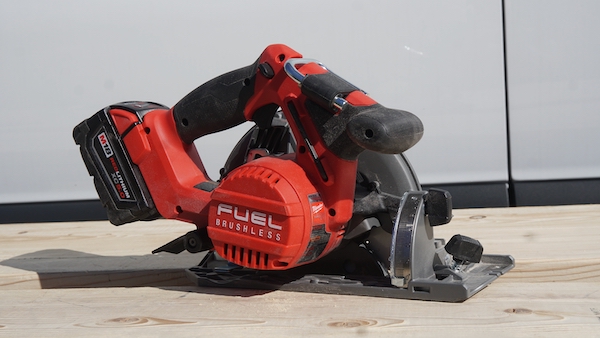
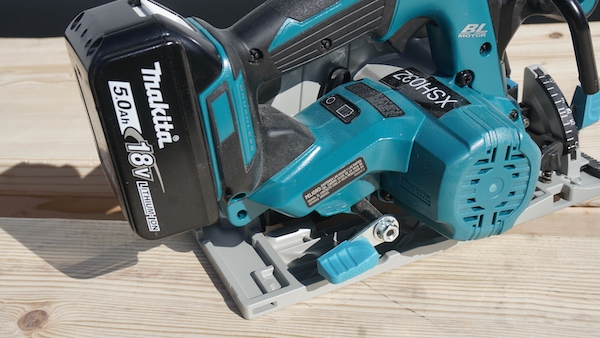

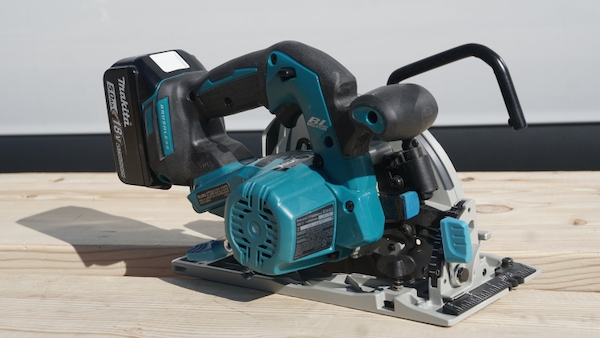

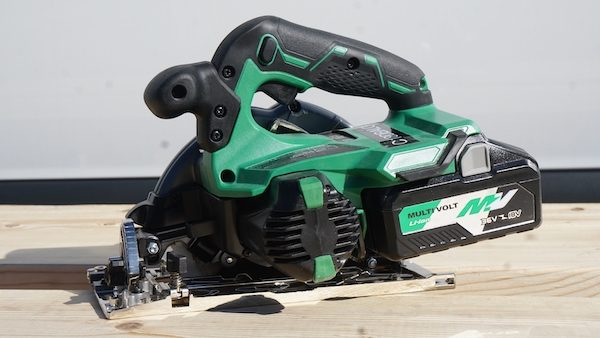
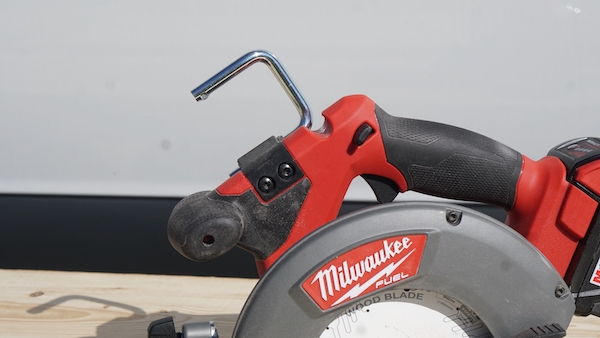
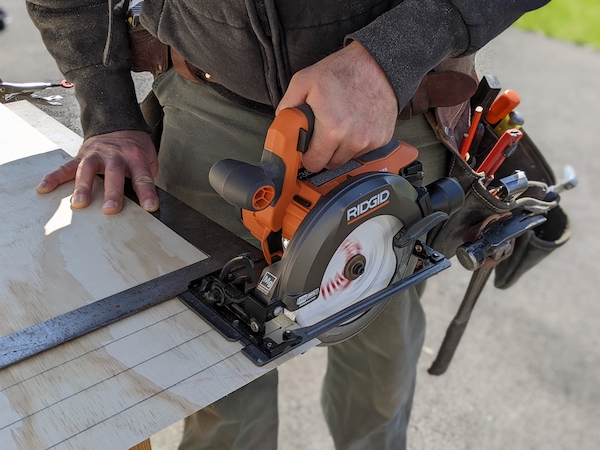
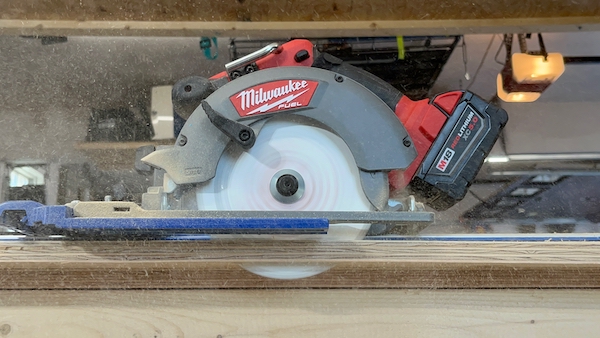
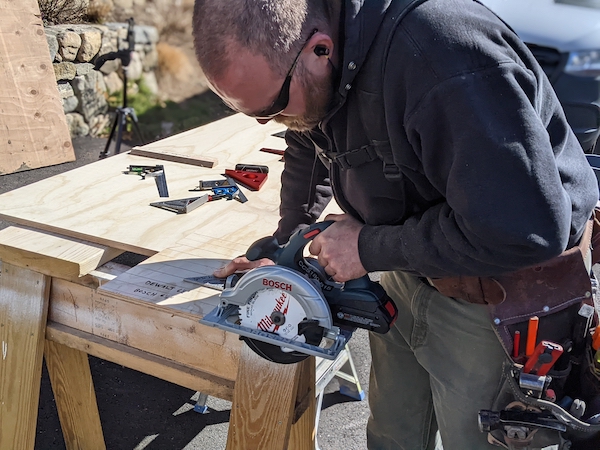
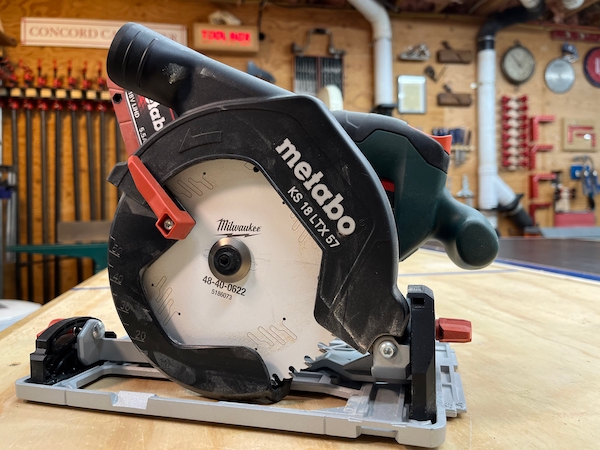
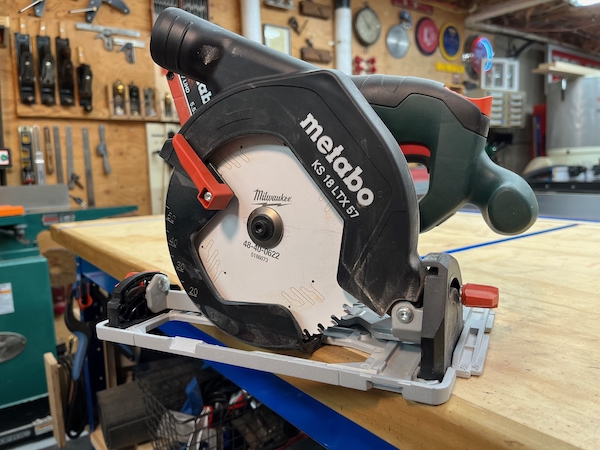
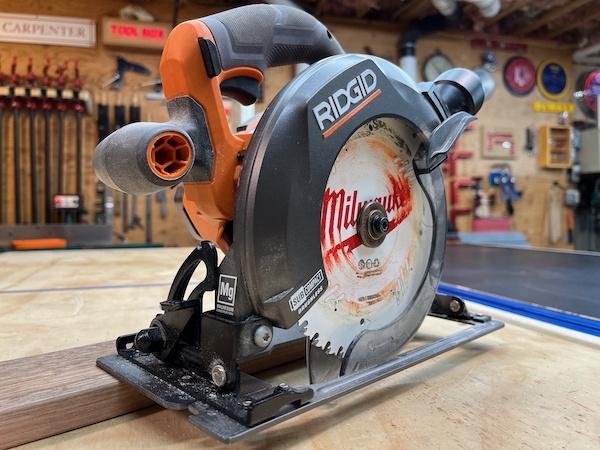
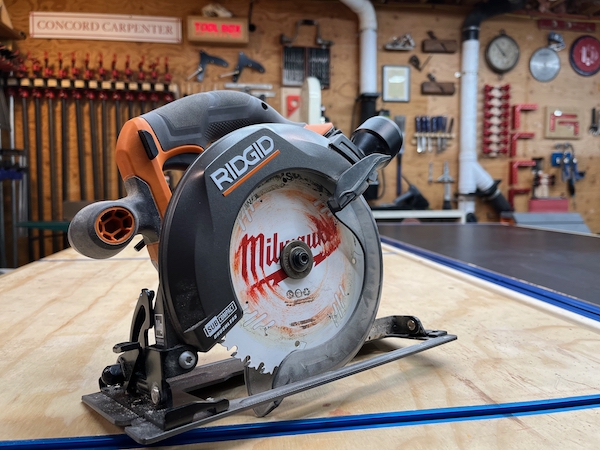
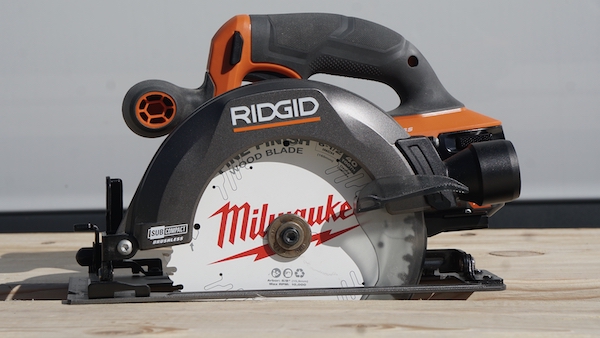

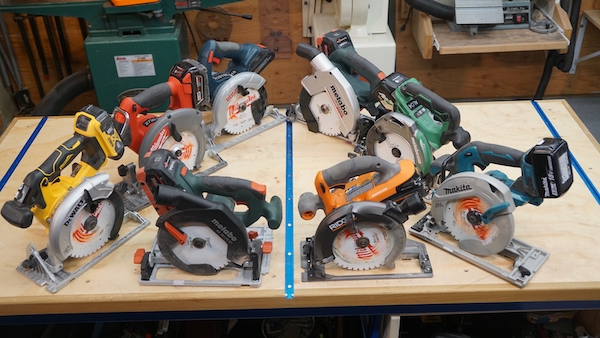












Another great review. I use the Makita subcompact. A lot of people don’t like that it’s a right blade saw, but I got used to it fairly quick. It’s not a brute on power but it weghs nothing and has no issues crosscutting a 2×12. It has some compromises to make it small like the depth adjustment handle is hard to get to. It also has the blade tool painted the same color as the body so it’s difficult to see. I have the 36v rear handle and just keep the tool with the blades.
What I have found from your videos is that most manufacturers make really good tools.
Sorry that was a question. Why no FLEX?
They chose not to participate
I wonder how the new FLEX 6 1/2″ inline circular saw would perform compared to these? Wish it could have been included.
They chose not to participate
[…] Milwaukee has updated its circular saw lineup with the new M18 FUEL 6 1/2″ model. The newest version of this saw features a “new to world” depth detent system and positive bevel detents. These two upgrades are a great improvement over the previous generation of the saw which was featured in our Best Cordless 6-1/2″ Circular Saw Head-to-Head. […]